Before Robert Crumb was born in August, 1943, Tijuana Bibles (jo-jo books, gray-backs, fuck books, two-by-fours) were being sold at schools, playgrounds, and parks. Before “men’s magazines” took the market place, the approximately 3.5 by 5 inch stapled paper books, wound up being some of the first media presentations of x-rated material. All are eight leaves and printed on the rectos only, the interior illustrations are always in black and white. The settings are American, and most feature celebrities and cartoon characters. Most are in English, and the story lines range between elementary and childish jokes, to some-what sophisticated caricatures of American culture; raising the assumption that they were most-likely published in America and used the red-herring title as a means to misdirect U.S. authorities. The Tijuana Bible made its first appearances in the 1920s and the popularity continued until the late 1950s.
Below are images of three Bibles from the 1940s:

The emergence of the typical “Underground comix” coincided with the end of the Tijuana Bible in the early to mid 1960s. In 1963 Vaughn Bodé self published one of the first underground commix (with an anti-war theme as its foundation); Dâs Kämpf:
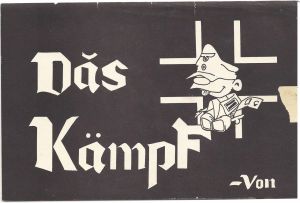
In 1964, Frank Stack published The New Adventures of Jesus:
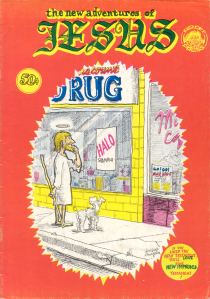
In 1964 Jack Jaxson self-published God Nose:
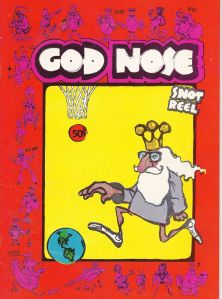
In 1965, the Lenny Bruce inspired comic, Lenny of Laredo (front and back), was self-published by Joel Beck:
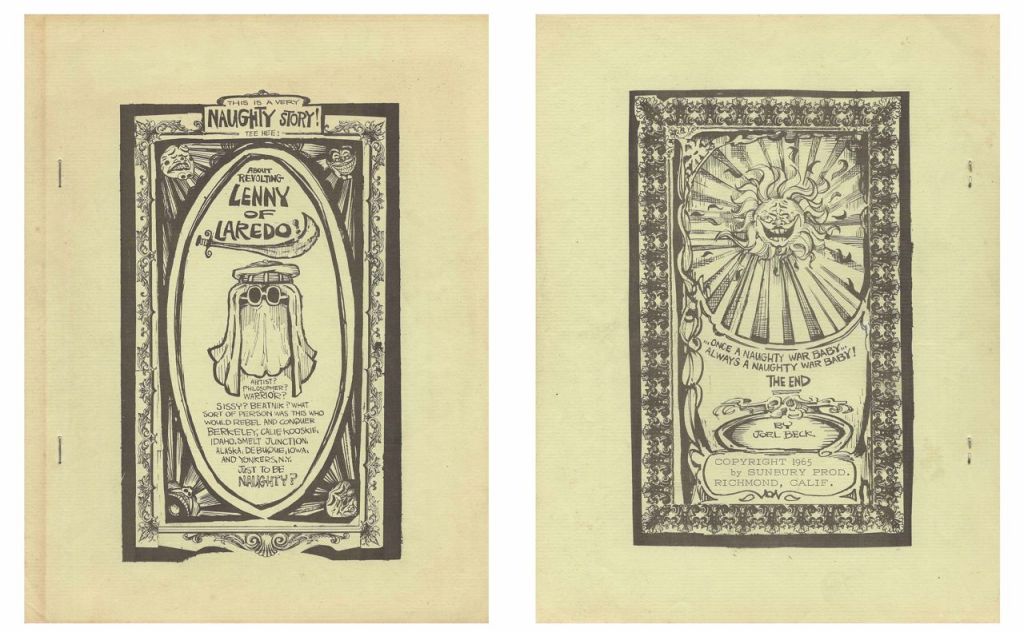
In 1962 Robert Crumb left his birthplace of Philadelphia to become a greeting card artist in Cleveland. As a child he produced homemade comics, a hobby he continued while in Ohio. In late 1964 Crumb sent one of these comics to Harvey Kurtzman’s (MAD creator) magazine Help!. It was received so well by Kurtzman, that Crumb was encouraged to move to New York and work for Help!. Though before Crumb was able to begin work, the magazine stopped publishing in 1965. Crumb remained in New York, drawing for himself and working for Topps, making trading cards(1965)—front of the cards on the left, back on the right:
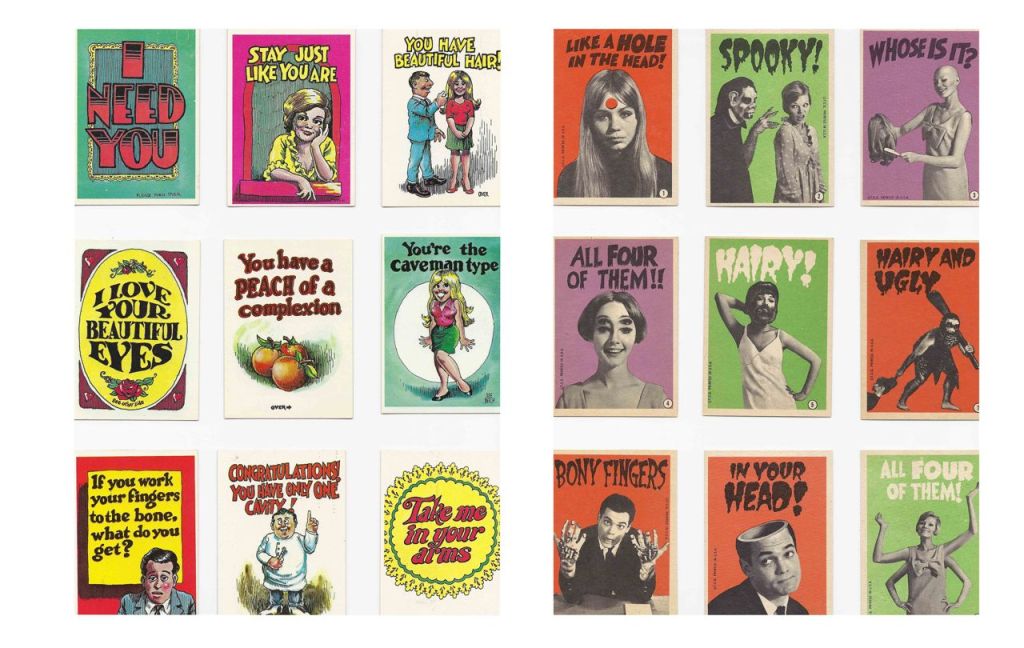 Later that same year Crumb returned to Cleveland. It was then that Crumb first experienced LSD: “I started taking L.S.D. in Cleveland in June of ’65. That changed my head around. It made me stop taking cartooning so seriously and showed me a whole other side of myself.”
Later that same year Crumb returned to Cleveland. It was then that Crumb first experienced LSD: “I started taking L.S.D. in Cleveland in June of ’65. That changed my head around. It made me stop taking cartooning so seriously and showed me a whole other side of myself.”
In 1967 Crumb moved to San Francisco, where he began creating comics for a magazine. His work in the magazines was popular to the point that he was asked to make a whole comic book. The artwork was stolen, so what was meant to be the second issue was published as Zap #1:
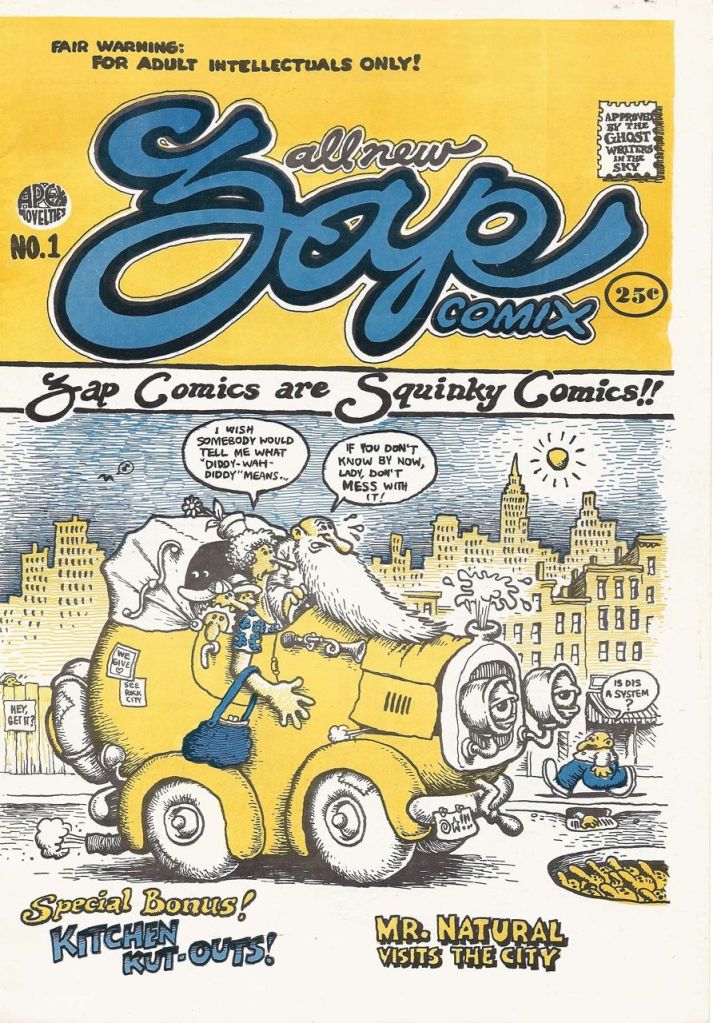
With Xerox copies of the stolen issue, Zap #0 was published in 1968 (front and back):
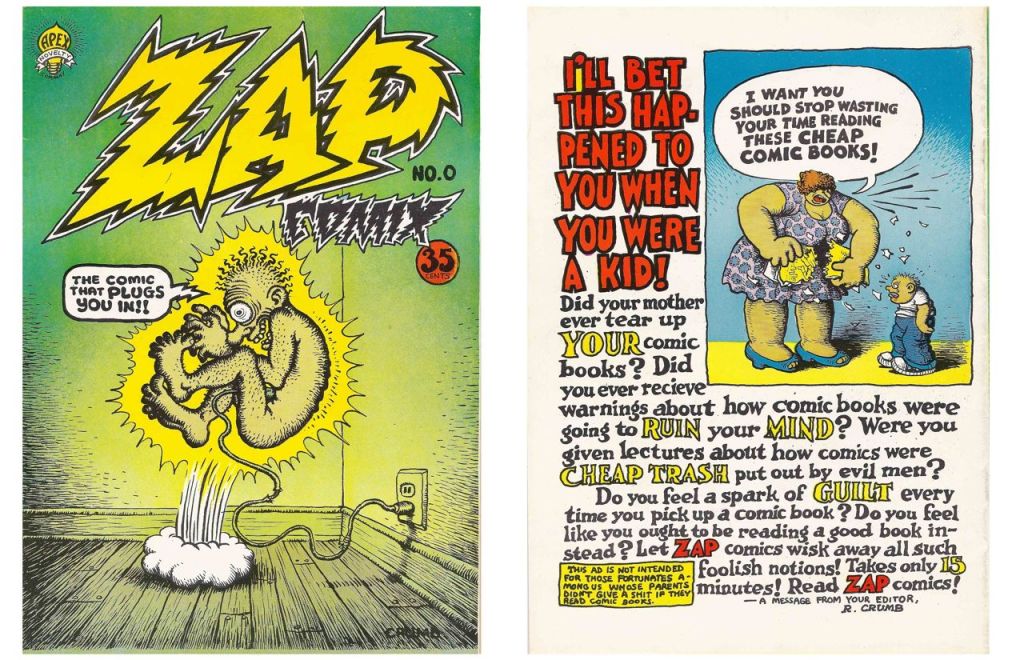
Zap Comix became such a big success, that other artists began contributing their work:
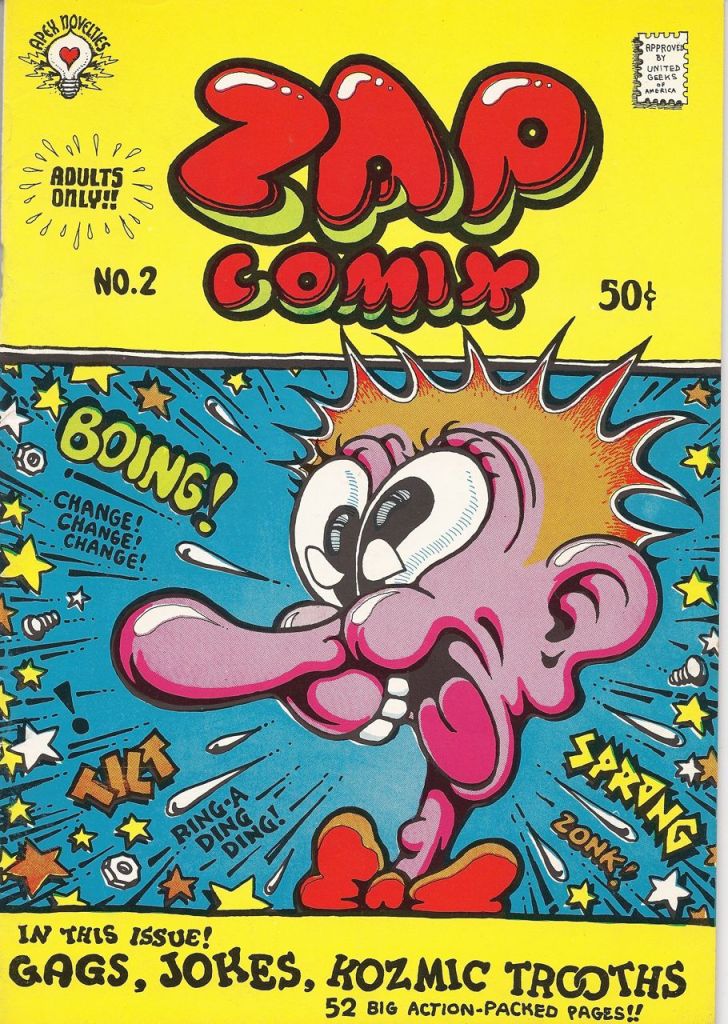
Zap #2
In 1968 Crumb began his Snatch Comics series:
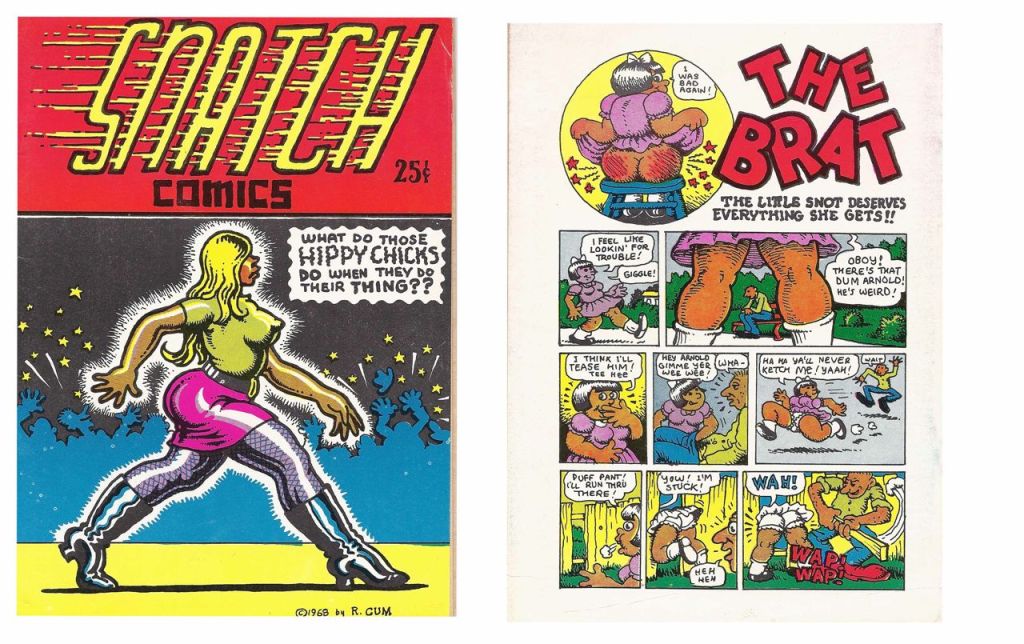 Front and back of Snatch #1
Front and back of Snatch #1
 Front and back of Snatch #2
Front and back of Snatch #2
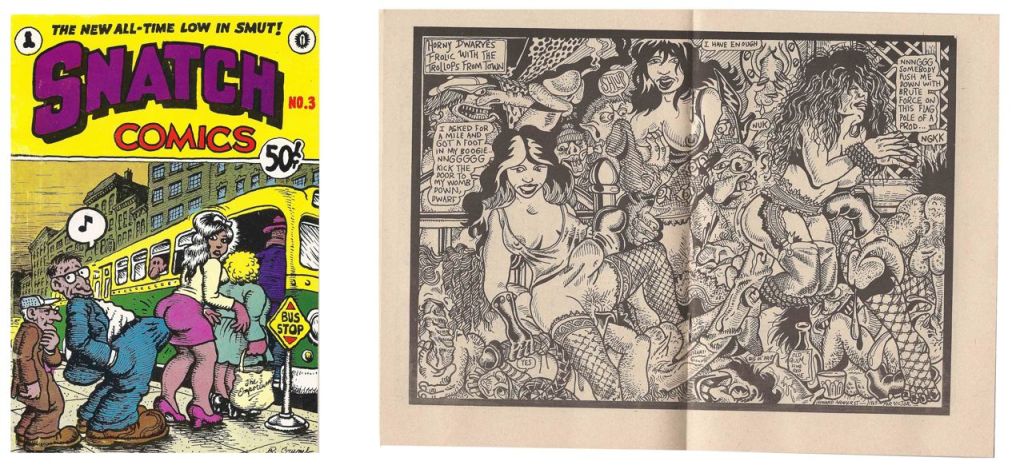 Front and interior of Snatch #3
Front and interior of Snatch #3

Bijou Funnies #1 (1968)
In 1969 Crumb published one of his most enduring and famous characters Fritz the Cat.
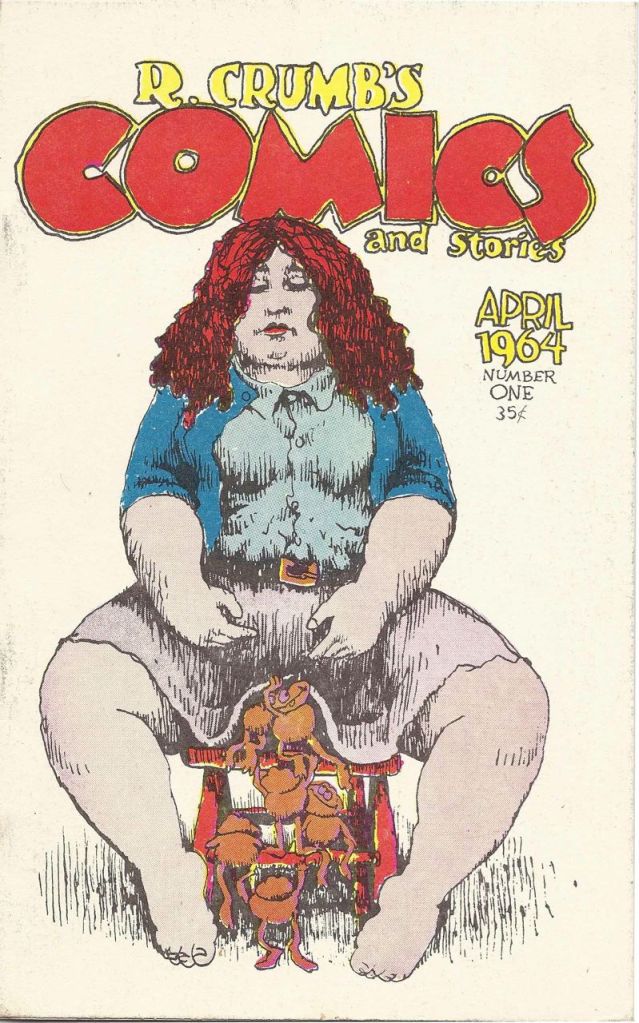 R. Crumb’s Comics and Stories (1969)
R. Crumb’s Comics and Stories (1969)
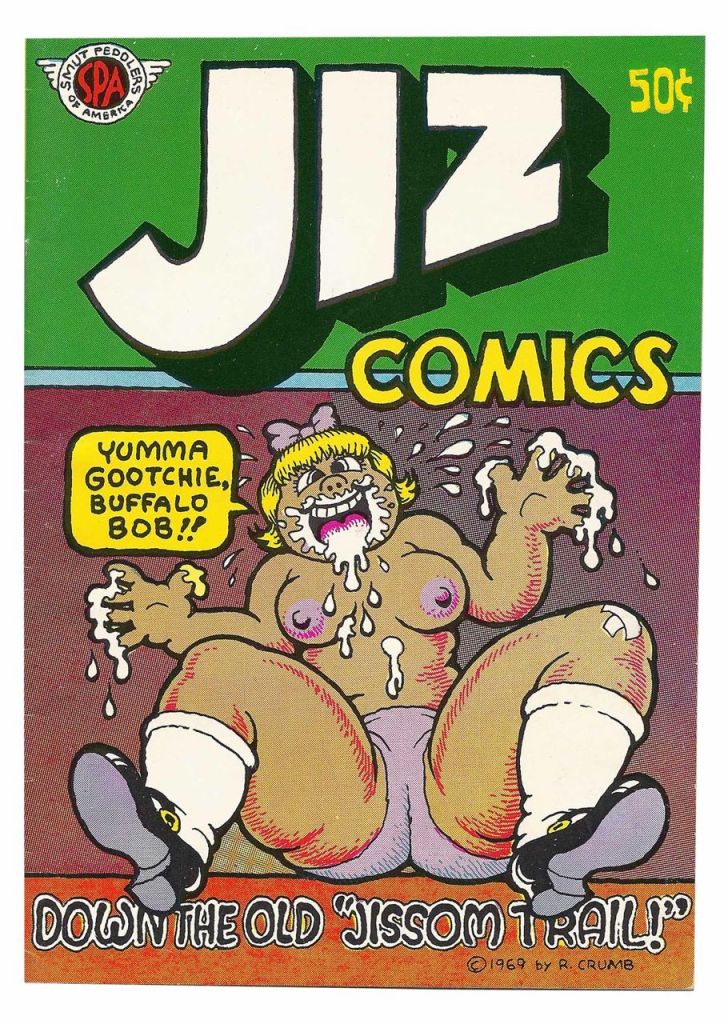 Jiz Comics #1 (1969)
Jiz Comics #1 (1969)
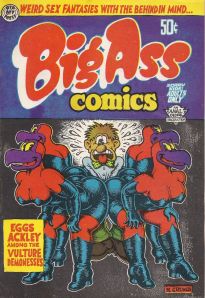
BigAss Comics #1 (1969)
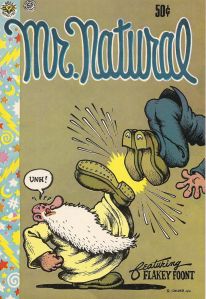
A comic based around one of the main characters in Zap; Mr. Natural #1 (1970)
Robert Crumb moved to Paris with his family, and remains there to this day. His characters continue to endure to this day and his comics are produced on a large scale. Crumb has recently released his version of the Book of Genesis.
The underground comix, with Robert Crumb as the forerunner, where an expression of the time in which they arose. The 1960s in America where a time of emerging free love, free life, free speech, and cheap drugs. With the counterculture booming, it was only a matter of time before controversial visual arts and media would arise. Underground comix are a representation of culture in their time and the beginning of a whole new world of visual arts in the Western World. Its origins arise out of the crude depression era Tijuana Bibles, and exploded in the 1960s with the generation the underground was made for. Crumb is the master of what we know as the underground visual arts; it is not merely as a result of his timing or creative mind, but through his artistic genius.
Links for background information
-A great article on the Tijuana Bible by the comic Art Spiegelman
Links on Robert Crumb
-A very good collection of images
-A clip from the 1994 documentary on Crumb (to meet the man behind the commix)
Leave a comment